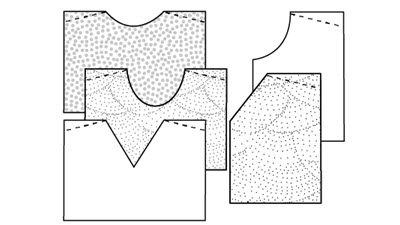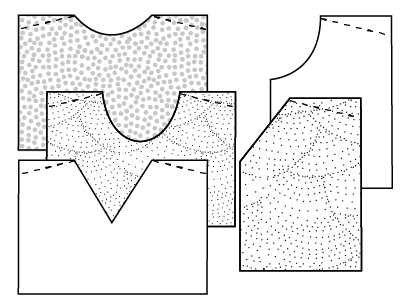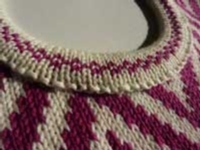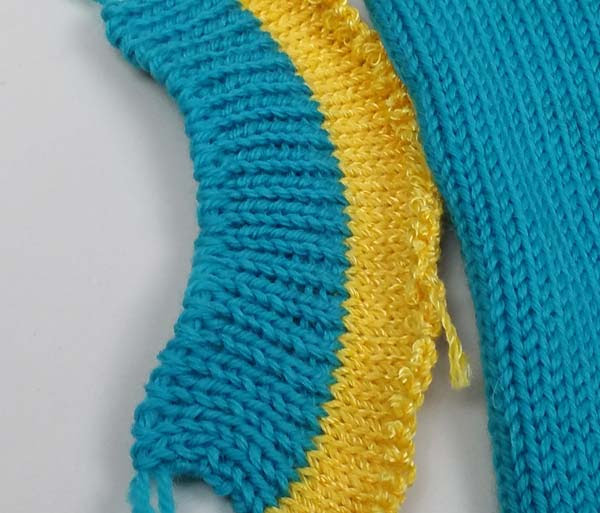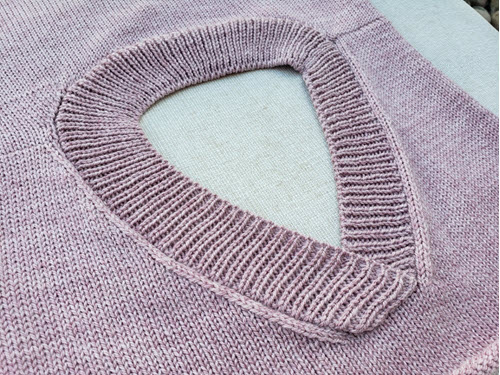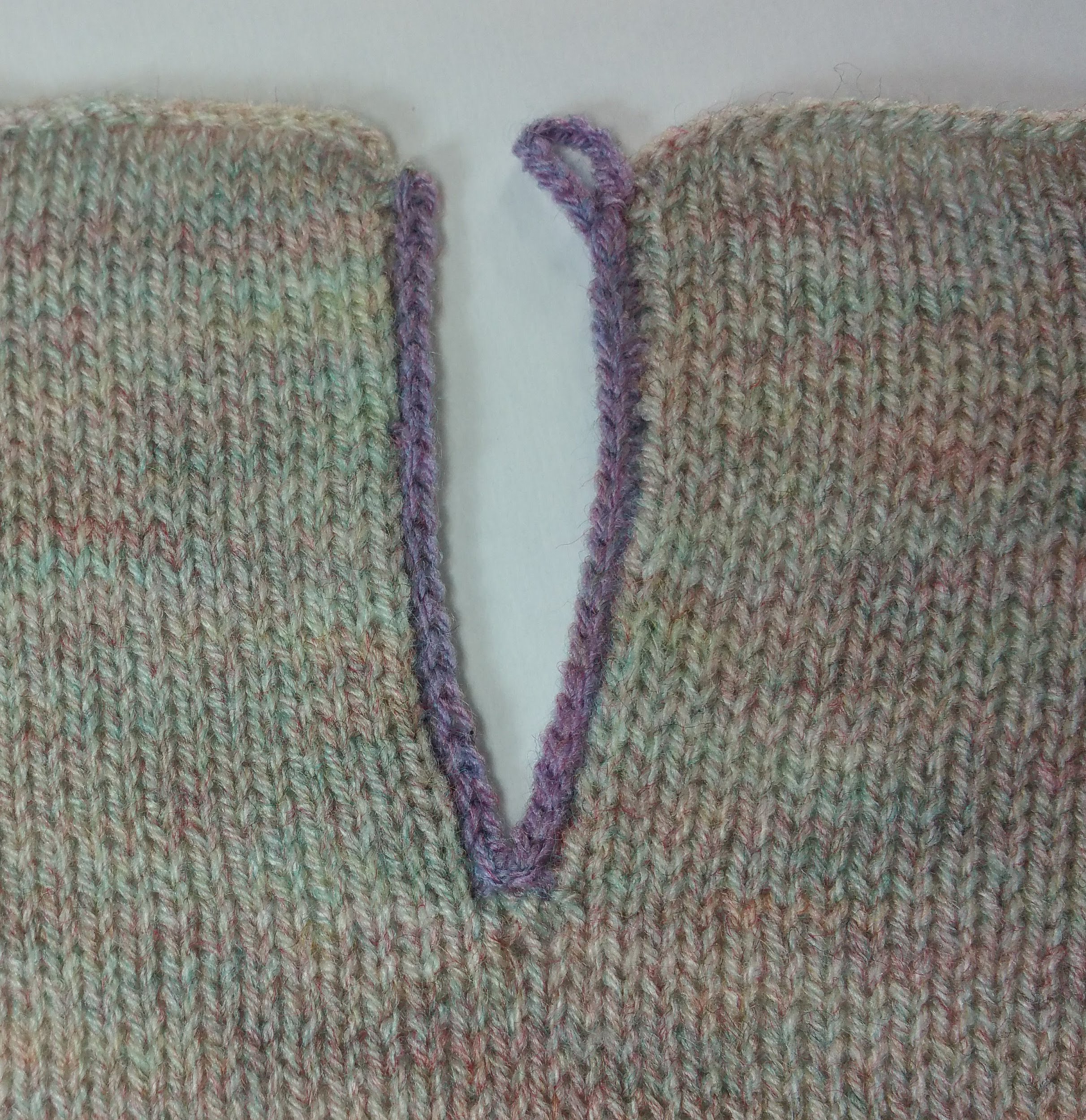3 Round Stockinette Neckband
The easiest shaped neckline to finish on the knitting machine, whether single or double bed, is the
round or scoop neckline. (The slit is a bit easier, but it is similar to a front band and will be covered
below.)
You will not have to do any increasing or decreasing for the round neckline.
This neckband is
usually knit double, folded to the back, and stitched in place. The double band gives the knitting a
more finished appearance.
Single BedSince single-bed knitting machines do not give us the option to knit in the
round, one shoulder of the garment will be seamed, leaving the other shoulder open to be stitched
along with the edge of the band when the band is completed.
When working on a single bed, be sure
to remember to add one stitch at each end for the seam.
Double BedOn a double-bed machine, the neckband can
be set up on both beds for a seamless band
(knit
circular/tubular )
